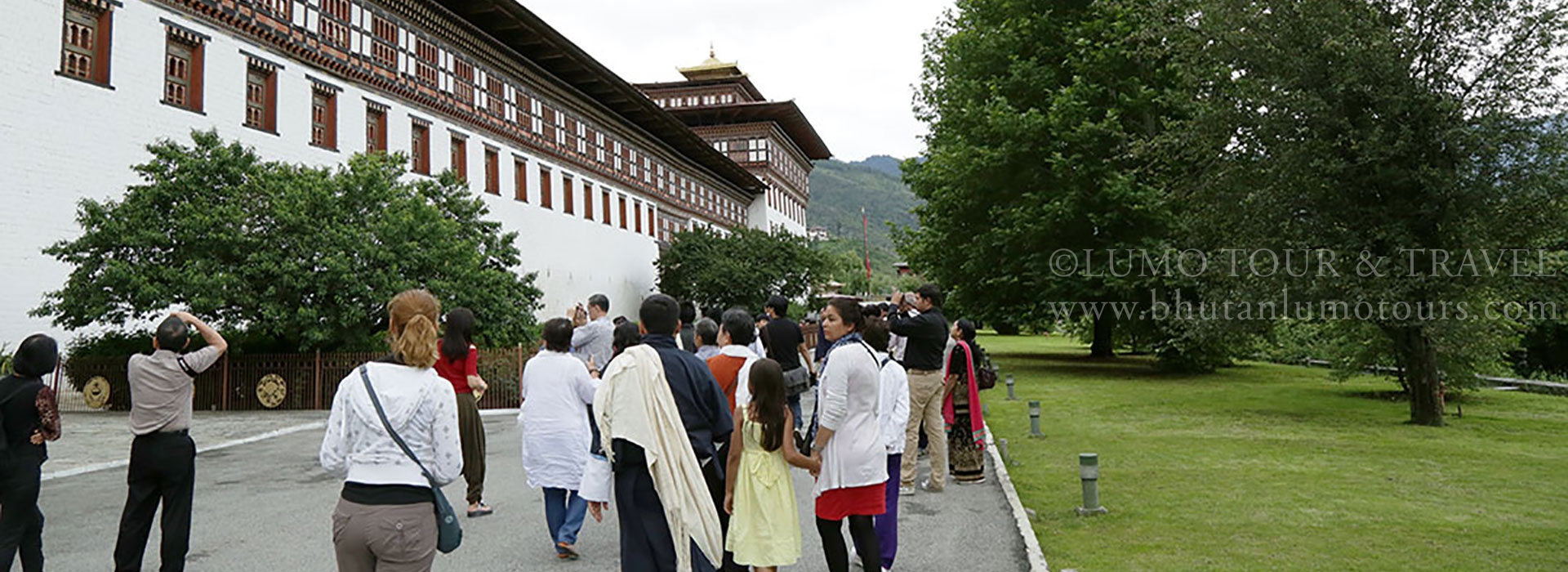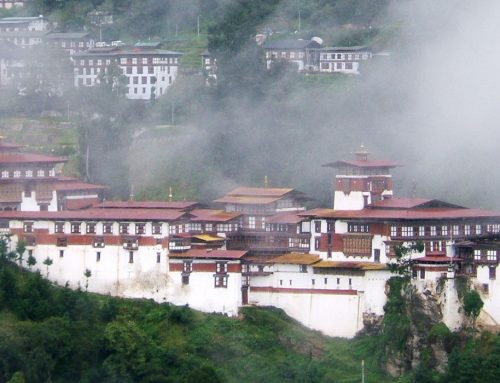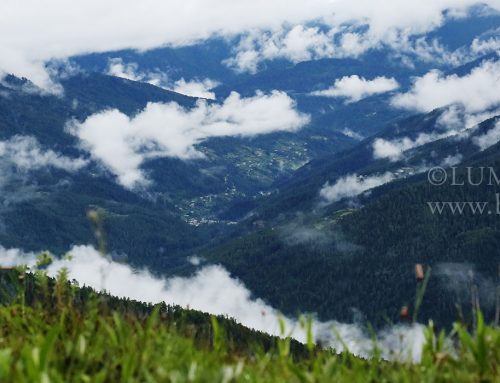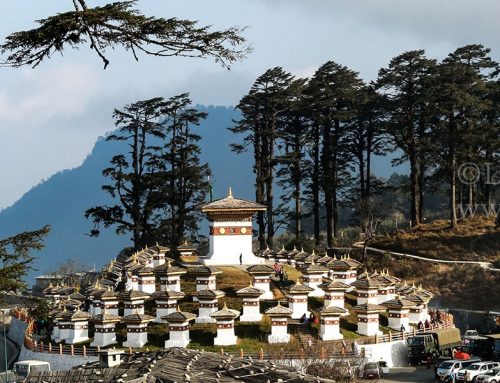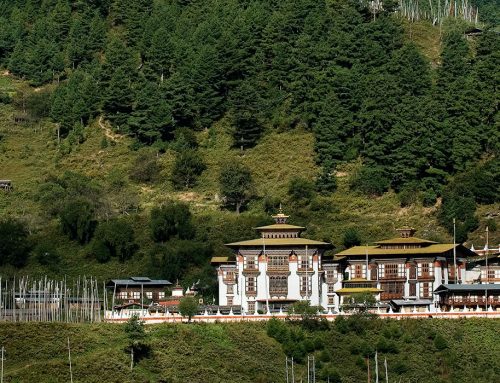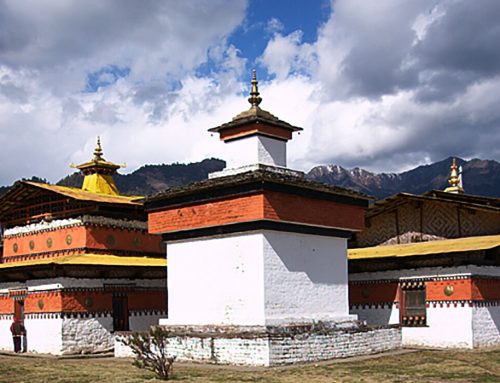- Duration: 7 nights / 8 days
- Accommodation: Hotels, Resorts and Guest Houses.
- Distance & Driving time:
- Paro to Thimphu – 54 Km – 2 Hrs
- Thimphu to Punakha – 76 Km – 3 Hrs
- Punakha to Wangdue – 17 Km – 40 Mins
- Wangdue to Gangtey – 66 Km – 2.5 Hrs
- Wangdue to Trongsa – 129 Km – 5 Hrs
- Trongsa to Bumthang – 68 Km – 3 Hrs
- Bumthang to Ura Valley – 55 Km – 2 Hrs.
- Highest altitude: Yotong La Pass (3425m)
- Visit to the largest Statue of Buddha in Bhutan
- Memorial Chorten
- Punakha Dzong (built in 1637)
- A Panoramic view of the Himalayas from the Dochula Pass (3140m)
- Chimi Lhakhang – “The Temple of Fertility”
- A farm house visit
- Excursion to famous Taktsang – “The Tiger’s Nest”
- Visit to Drugyal Dzong – “The Fortress of victory” (built in1644)
- Kichu Monastery
- Visit to Phobjikha/Gangtey Valley – “The most beautiful glacial valley of the Himalayas – The roosting ground for the rare Black-necked crane”
- Trongsa Dzong – “One of the most impressive fortress in Bhutan” (built in 1644)
- Jakar Dzong – “The Castle of White Bird” (built in 1667).
- Membartsho – “The Burning Lake”
- Excursion to beautiful Ura valley and Ura Temple (3100m)
- Tamshing Lhakhang
- Jambay Lhakhang – “The most spectacular Jambay Lhakhang festival is staged here every winter”
- Kurjey Lhakhang – “The body print of Guru Rimpoche is seen here”.
Day 01. Arrive Paro (Altitude 2280 m) (By Druk Air):
Your guide from Druk and Drukpa Travels will receive you at the airport and drive you to the hotel. After tea, visit the ruins of Drukgyal Dzong. It is 16 km northward from Paro proper.
The dzong was built by Zhabdrung Ngawang Namgyel, father and unifier of medieval Bhutan, in 1647. The dzong was destroyed by fire and left in ruins. It was built to commemorate victories over Tibetan invasions.
On a clear day, you can see magnificent Mt. Jhomolhari (7,314m). On the way back, visit Kichu Lhakhang, built in 659 A.D by the Tibetan King Songtsen Gampo.
Dinner and overnight in Hotel.
Day 02. Thimphu Full Day Sightseeing (Altitude 2320 m)
The day begins with a visit to the National Memorial Choeten (built in 1974 in honor of the late third King Jigme Dorji Wangchuk) and the Dupthop Lhakhang, a nunnery. We then visit the National Library stocked with ancient Buddhist scriptures and the National Institute of Zorig Chusum. It is here where the tradition of Bhutan’s 13 arts and crafts are kept alive.
After lunch, we drive to the National Institute of Traditional Medicine where medicines are prepared according to ancient practices and to Lungtenzampa to see the Royal silver smiths at work and Bhutanese paper factory.
Other highlights include a visit to Tashichho Dzong. The dzong houses the office of His Majesty the king and is the seat of the national government and the Central Monastic Body. The dzong also serves as the summer residence of the Je Khenpo (Chief Abbot of Bhutan). Finally, visit the Handicrafts Emporium followed by shopping for souvenirs in the capital city.
Overnight in Hotel.
Day 03 : Thimphu / Trongsa ( 200 Km, 6 hours drive)
After early breakfast, drive up to Dochu-la pass (3,088m/ 10,130 ft) stopping briefly here to take in the view and admire the chorten, mani wall, and prayer flags which decorate the highest point on the road. If skies are clear, the following peaks can be seen from this pass (left to right): Masagang (7,158m), Tsendagang (6,960m), Terigang (7,060m ), Jejegangphugang (7,158 m ), Kangphugang (7,170 m ), Zongphugang (7, 060 m ), a table mountain that dominates the isolated region of Lunana – finally Gangkar puensum, the highest peak in Bhutan at 7,497m. Then continue onwards, reaching Wangduephodrang town in time for lunch. From Dochu-la pass, it is a long, winding descent into the Wangduephodrang valley, which is about 1,700m below the pass. Take lunch at Wangduephodrang town, then continue on to Trongsa across Pele-la pass (3,300m/10,830 ft), the traditional boundary between east and west. The pass is marked by a large white chorten prayer flags. There is an abrupt change in vegetation at this point, with mountain forest replaced by high altitude dwarf bamboo. Stop en route at Chendbji Chorten, patterned on Kathmandu’s Swayambhunath Stupa, with eyes panted at four cardinal points. It was built in the 18th century by Lama Shida from Tibet, to cover the remains of an evil spirit that was subdued at this spot. Arrive at Trongsa late afternoon and check into the lodge for the night.
Day 04 : Trongsa / Bumthang ( 68 Km, 3 hours drive )
After breakfast, visit Trongsa Dzong. Built in 1648 it was the seat of power over central and eastern Bhutan. Both the first and second Kings of Bhutan ruled the country from this ancient seat. All four Kings were invested as Trongsa Penlop (‘governor’) prior to ascending the throne, and the present Crown Prince now holds the post. The Dzong is a massive structure with many levels, sloping down the contours of the ridge on which it is built. Then drive to Bumthang, 68 km from Trongsa, a journey of about 3 hours, over the Yutong-la pass (3,400m/ 11,155 ft). The road winds steeply up to the pass, 28 km from Trongsa, then runs down through coniferous forest into a wide, open cultivated valley known as the Chumey valley. On arrival in Bumthang, check in at your lodge. Overnight at the lodge in Bumthang.
Day 05 : Bumthang / Punakha ( 205 Km, 7 hours drive )
After breakfast, explore further the fascinating valley of Bumthang. Then proceed to Punakha, stopping along the way at Trongsa for lunch, which would be served in local restaurant, famous for its cuisine. Visit Wangduephodrang Dzong and town en route to Punakha, which we will reach late afternoon. Overnight at the hotel in Punakha.
Day 06 : Punakha / Paro ( 125 Km, 4.1/2 hours drive )
Morning visit Punakha Dzong, a massive structure built at the junction of two rivers. Punakha was Bhutan’s capital until 1955, and Punakha Dzong still serves as the winter residence of the central monk body. Bhutan’s first King, Ugyen Wangchuck, was crowned here in 1907. The fortress has withstood several damages from fire, earthquake and flood over the centuries. The latest flood, in October, 1994, caused great damages to the fortress but miraculously spared its most holy statue. Also visit Khamsum Yulley Namgyal Chorten, the newly built stupa. After lunch, drive to Paro en route visit Simtokha Dzong. This dzong, built in 1627 is the oldest in Bhutan. It now houses the Institute for Language and Culture Studies. Overnight at the hotel in Paro.
Day 07 : Paro
Today’s full day of sightseeing in Paro valley includes, visit to Ta Dzong, which in the past served as watchtower for Paro Dzong (Rinpung Dzong) and now houses the National Museum, and Paro Dzong (rinpung Dzong), built in 1646 by Shabdrung Ngawang Namgyal. After lunch, we drive up the valley Drukgyel Dzong, built in 1647 by the Shabdrung to commemorate the Bhutanese victory over the Tibetans in war of 1644. En route, we also visit Kichu Lhakhang, built in the 7th century by the Tibetan king, Songtsen Gampo. Overnight at the hotel in Paro.
Day 08 : Depart Paro
After early breakfast in the hotel, drive to the airport for flight to onward destination.
- Hike to Khamsung Yulley Namgyal Choling temple.
- Visit a Bhutanese farm house.
- Mountain biking in Thimphu.
- Rafting in Punakha.
- Hike to Gogona valley in Gangtey.
- Excursion to Shingkhar village / Ura valley.
- Hike to Tangbi Lhakhang and Thangbi village.
- Hike to Tharpaling Monastery.
- Excursion to Dzongdrakha Lhakhang
- Excursion to Chelila pass.
- All Meals [Breakfast /Lunch/Dinner]
- Accommodation [Twin Sharing] Single Room Supplement Extra US $: 40 per room per night.
- All transportation within the country including airport transfers.
- Royalty & Govt. Taxes
- Entrance fees for Museums and Monuments only
- Visa Fee.
- Airport tax
- Tourism Development fund
- Sightseeing
- Druk Air fare.
- Insurance Premiums,
- Payments for service provided on a personal basis
- Cost for any services not mentioned in the “Cost Include head”.


